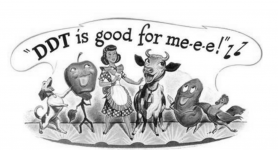Welcome to my ignore list.Yeah. I didn't think you would actually want to get down to cases.
One of the top vaccine designers in the world came out this last month and said the vaccine rollout needed to stop immediately because if it doesn't it has the potential to wipe out the entire human race. This man has been inside of the virology world his entire career so he is not, what you would consider to be, anti-vaxxer. He's worked for Bill Gates. He's managed corporate vaccine companies. He has been the vaccine designer for multiple corporations and non-profits. He was the Senior Ebola Program manager for the Global Alliance for Vaccines and Immunization (GAVI). He knows he is destroying his career by speaking out, yet he's forced to do so by his conscience.
Here is a summary of his career:

DVM, PhD | Geert Vanden Bossche
Geert Vanden Bossche, DMV, PhD, independent virologist and vaccine expert, formerly employed at GAVI and The Bill & Melinda Gates Foundation, sends open call to all authorities, scientists and experts around the world, to whom this concerns: the entire world population.www.geertvandenbossche.org
Here's a link to what he published on March 13 of this year.
Refute it smart guy since you know so much.
And you would call him insane and say you know better than he does. You'd call him a conspiracy theorist when he's an insider and one of the best vaccine designers in the world. And you refuse to listen to the man even though if he's right it is the end of humanity as we know it. You'd take that risk without even giving the man a hearing. ***shakes head in wonder at the chosen blindness***
All you have is ad hominen attacks to make. You won/t dispute the evidence. You accept everything the mockingbird media says as truth even though you know they are a huge bunch of liars and have pumped out nothing but propaganda for years. They are the propaganda arm of the Democrat party. That just makes me shake my head in wonder.
The brainwashing of this world is almost complete because only very few people will question authority any more. Only very few of us will even begin to question the media, even though 90% of it is owned by 6 corporations so those six corrupt corporations control the narrative. And you think that is a good thing and that anyone who questions their narrative is crazy....
You are using an out of date browser. It may not display this or other websites correctly.
You should upgrade or use an alternative browser.
You should upgrade or use an alternative browser.
HIV, sperm, placenta code in mrna vaccines
- Thread starter Gary K
- Start date
expos4ever
Well-known member
The simple facts are these:No, I gave it as an example of one of your many tin-foil hat conspiracy theories. You swallowed your tin-foil hat conspiracy theory and owned it.
You're a 9/11 truther. None of your insults are worth diddly. You like tin-foil hat conspiracy theories as much as ffreeloader.
- The "expert" in post 1 is demonstrably a nutter (so it is not "character assassination" to point this out)
- Trump did indeed try to overturn the election results in Georgia - so your implication that it is "character assassination" to point this out is manifestly misguided.
These are the facts.
And your statement that I am a 9/11 truther is either:
- an honest mistake on your part;
- a lie.
expose4ever is demonstrably a nutter (so it is not "character assassination" to point this out)- Trump did indeed try to overturn the election results in Georgia - so your implication that it is "character assassination" to point this out is manifestly misguided.
Only took expose4ever 8 posts to accept that 9/11 was not caused by space lasers. I'm glad I'm making progress.And your statement that I am a 9/11 truther is either:
- an honest mistake on your part;
- a lie.
"Since the most famous case of polio may have been misdiagnosed, therefore all cases were misdiagnosed, there was no disease, and teh vaccine was unnecessary." Is this your thinking?World's most famous case of polio wasn't actually polio it was Guillian Barre Syndrome.
Notice the polio diagnosis was made upon only 2 factors: fever and paralysis. No testing was done to identify the virus. This is what happened to millions of people. The diagnoses were not carefully done. Cause and effect was not carefully researched. And that was done by the most famous of the day polio doctor. How many doctors followed the example of the leading polio doctor of the day? Shoddy, slipshod work. Lovett diagnosed polio by guess and by golly.
LOL. No, that is not my thinking. It's your baseless supposition."Since the most famous case of polio may have been misdiagnosed, therefore all cases were misdiagnosed, there was no disease, and teh vaccine was unnecessary." Is this your thinking?
I'm just showing how loose the definition of "polio" was for decades. FDR is no longer a polio statistic. Before the Salk vaccine was released every person that was diagnosed with polio was diagnosed just that loosely. Did some of them actually have polio? Yeah, a small minority because of so many other diseases being diagnosed wrongly. After the vaccine was released the entire scenario changed. The diagnosis criteria was made much more specific. That right there cut the number of polio diagnosis way down. That reduction in diagnoses of polio had nothing to do with any vaccine. It had everything to do with standards of diagnosis.
Here is a list of the things diagnosed as polio pre-vaccine:
DDT toxicity was a huge factor. DDT was advertised by the manufacturers as "good for you". People were told to put it on their food. Dust their sheets with it. Sprinkle it on their window sills to keep the bugs out. People were directly sprayed with it when on the beaches. The side effects of that were really bad. Here's the problems DDT causes in human beings:Enteroviruses such as Coxsackie and ECHO
Undiagnosed congenital syphilis
Arsenic and DDT toxicity
Transverse myelitis
Guillain-Barré syndrome
Provocation of limb paralysis by intramuscular injections of
many types, including a variety of vaccines
Hand, foot, and mouth disease11
Lead poisoning 12
Exposure to DDT can cause symptoms such as:
- Hypersensitive to stimulation, a sensation of prickling, tingling or creeping on skin.
- Headache, dizziness, nausea, vomiting, incoordination, tremor, mental confusion, hyperexcitable state.
- In severe cases: convulsions, seizures, coma and respiratory depression.
DDT is highly toxic, and it may be fatal if inhaled, swallowed, or absorbed through the skin. Avoid any skin contact with this pesticide. Effects of contact with DDT or inhalation may be delayed.

DDT — toxicity, side effects, diseases and environmental impacts
DDT, also known as dichloro-diphenyl-trichloroethane, belongs to a class of pesticides called organochlorides. It is a synthetic chemical compound that doesn’t occur ...
Ever see pictures of kids in iron lungs? Respiratory depression. Unable to breathe.
Seizures were common. They were diagnosed as paralysis.
Here's a group of statements taken from the following source
H. Ratner et al., “The Present Status of Polio Vaccines,” Illinois Medical
Journal, vol. 118, nos. 2, 3, pp. 84–93,160–68. Edited from a transcript of a
panel discussion presented before the Section on Preventive Medicine and
Public Health at the 120th annual meeting of the Illinois State Medical Society
in Chicago, May 26, 1969.
Prior to 1954 any physician who reported paralytic
poliomyelitis was doing his patient a service by way of
subsidizing the cost of hospitalization and was being
community-minded in reporting a communicable disease. The
criterion of diagnosis at that time in most health departments
followed the World Health Organization definition: “Spinal
paralytic poliomyelitis: signs and symptoms of nonparalytic
poliomyelitis with the addition of partial or complete paralysis
of one or more muscle groups, detected on two examinations at
least 24 hours apart.” Note that “two examinations at least 24
hours apart” was all that was required. . . . Laboratory
confirmation and presence of residual [longer than 24 hours]
The source for the following quote is:The change in 1955 meant that we were reporting a new
disease, namely, paralytic poliomyelitis with a longer-
lasting paralysis. Furthermore diagnostic procedures have
continued to be refined. Coxsackie virus and aseptic meningitis
have been distinguished from paralytic poliomyelitis. Prior to
1954 large numbers of these cases were mislabeled as
paralytic poliomyelitis. Thus, simply by changes in
diagnostic criteria, the number of paralytic cases was
predetermined to decrease in 1955-1957, whether or not
any vaccine was used.14
G. C. Brown, “Laboratory Data on the Detroit Poliomyelitis Epidemic 1958,”
Journal of the American Medical Association, vol. 172, February 20, 1960,
pp. 807–812.
During an epidemic of poliomyelitis in Michigan in 1958,
virological and serologic studies were carried out with
specimens from 1,060 patients. Fecal specimens from 869
patients yielded no virus in 401 cases, poliovirus in 292, ECHO
(enteric cytopathogenic human orphan) virus in 100,
Coxsackie virus in 73, and unidentified virus in 3 cases. Serums
from 191 patients from whom no fecal specimens were
obtainable showed no antibody changes in 123 cases but did
show changes diagnostic for poliovirus in 48, ECHO viruses in
14, and Coxsackie virus in 6. In a large number of paralytic
as well as nonparalytic patients poliovirus was not the
cause. Frequency studies showed that there were no
obvious clinical differences among infections with
Coxsackie, ECHO, and poliomyelitis viruses. Coxsackie and
ECHO viruses were responsible for more cases of
“nonparalytic poliomyelitis” and “aseptic meningitis” than
was poliovirus itself. 15
The medical environment for a polio diagnosis had changed radically and vastly lowered the number of diagnoses.
Here is what was said in a medical journal about consumer usage of DDT.
The source for the above quote:
M. Biskind, “DDT Poisoning and the Elusive „Virus X‟: A New Cause for
Gastroenteritis,” American Journal of Digestive Diseases, vol. 16, no. 3, 1949,
pp. 79–84.
Despite the fact that DDT is a highly lethal poison for all
species of animals, the myth has become prevalent among
the general population that it is safe for man in virtually
any quantity.Not only is it used in households with reckless
abandon, so that sprays and aerosols are inhaled, the solutions
are permitted to contaminate the skin. Bedding and other
textiles are saturated. Food and food utensils are
contaminated. DDT is also widely used in restaurants and food
processing establishments and as an insecticide on crops.
Cattle, sheep and other food animals are extensively dusted
with it and large areas are indiscriminately sprayed from
airplanes for mosquito control. DDT is difficult and usually
completely impossible to remove from contaminated foods (it
is not affected by cooking) and it accumulates in the fat and
appears in the milk of animals who feed on sprayed pasture or
on contaminated fodder or who lick the DDT from their hides.
As DDT is a cumulative poison, it is inevitable that large-scale
intoxication of the American population would occur. In 1944,
Smith and Stohlman of the National Institutes of Health, after
an extensive study of the cumulative toxicity of DDT, pointed
out,“The toxicity of DDT combined with its cumulative action
and absorbability from the skin places a definite health hazard
on its use.”34
The source for the above quote:
M. Biskind, “DDT Poisoning and the Elusive „Virus X‟: A New Cause for
Gastroenteritis,” American Journal of Digestive Diseases, vol. 16, no. 3, 1949,
pp. 79–84.
Edit:
Here are some numbers for polio. With modern diagnostic methods:

I gather smallpox wasn't real either?
Here are some numbers for polio. With modern diagnostic methods:

I gather smallpox wasn't real either?
Last edited:
Welcome to my ignore list.The simple facts are these:
- The "expert" in post 1 is demonstrably a nutter (so it is not "character assassination" to point this out)
- Trump did indeed try to overturn the election results in Georgia - so your implication that it is "character assassination" to point this out is manifestly misguided.
These are the facts.
And your statement that I am a 9/11 truther is either:
- an honest mistake on your part;
- a lie.


